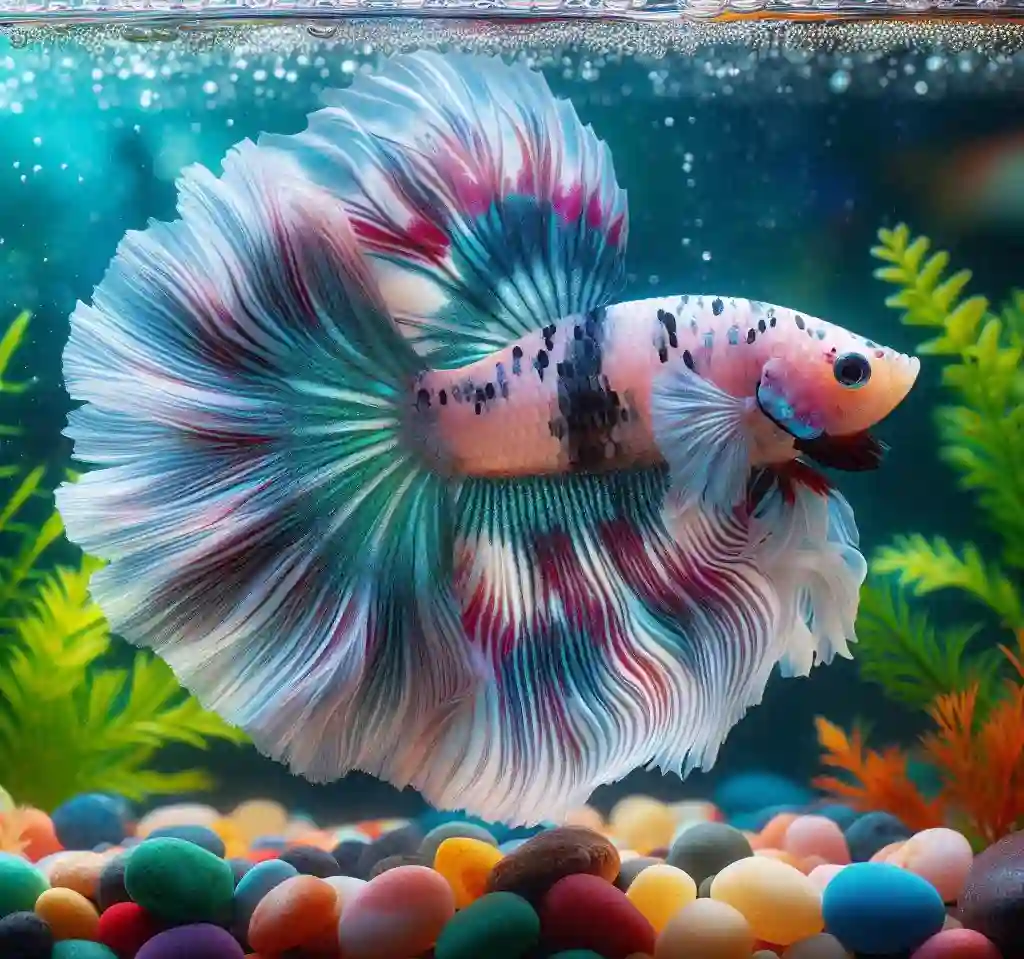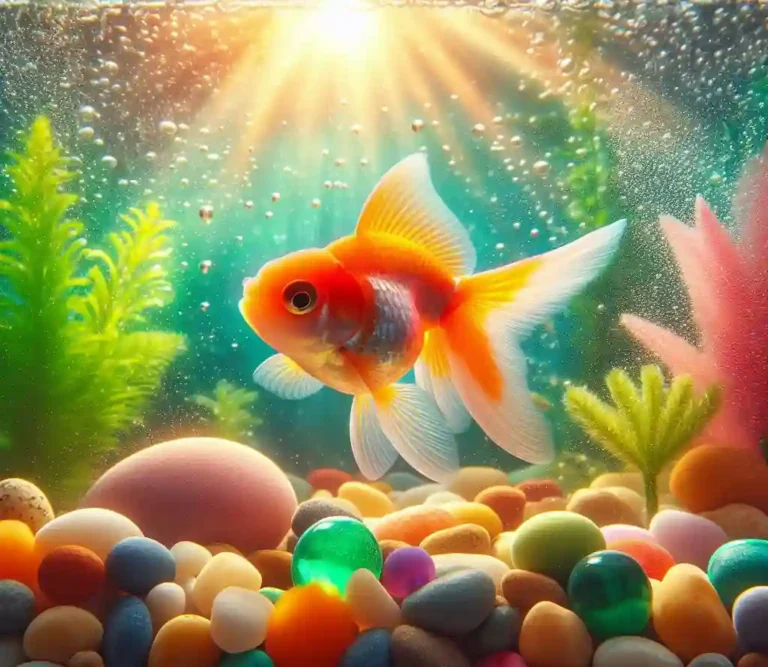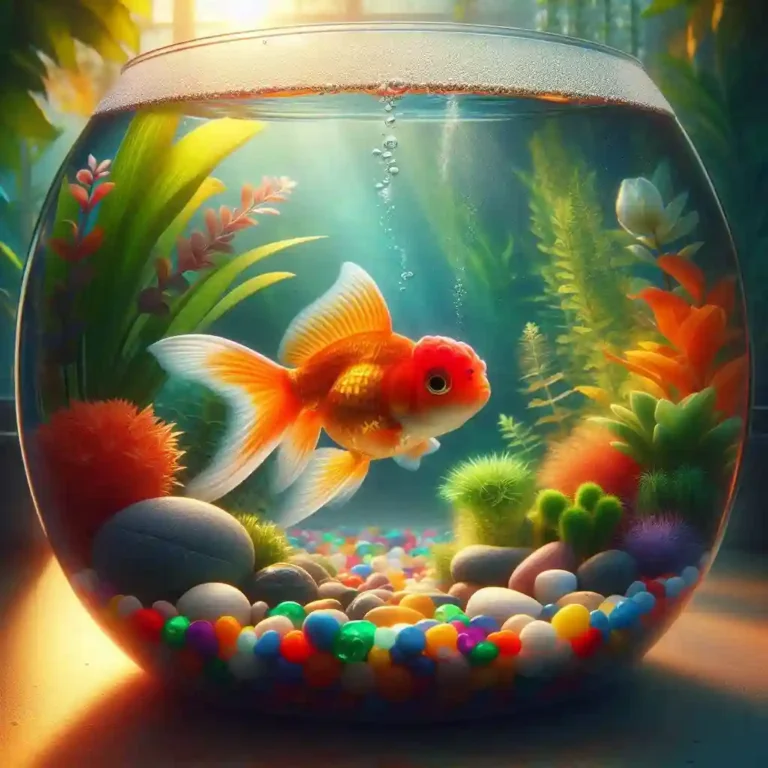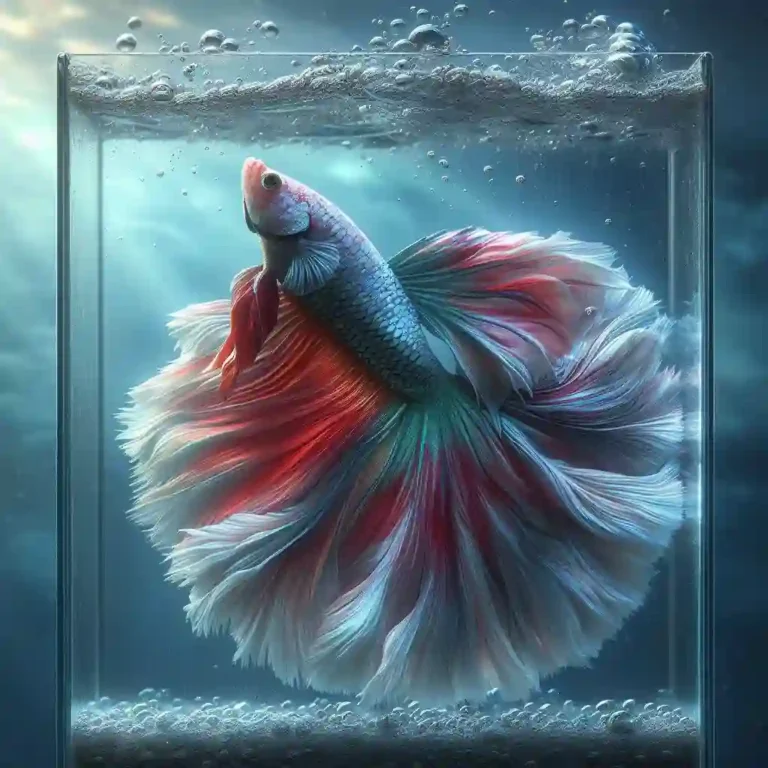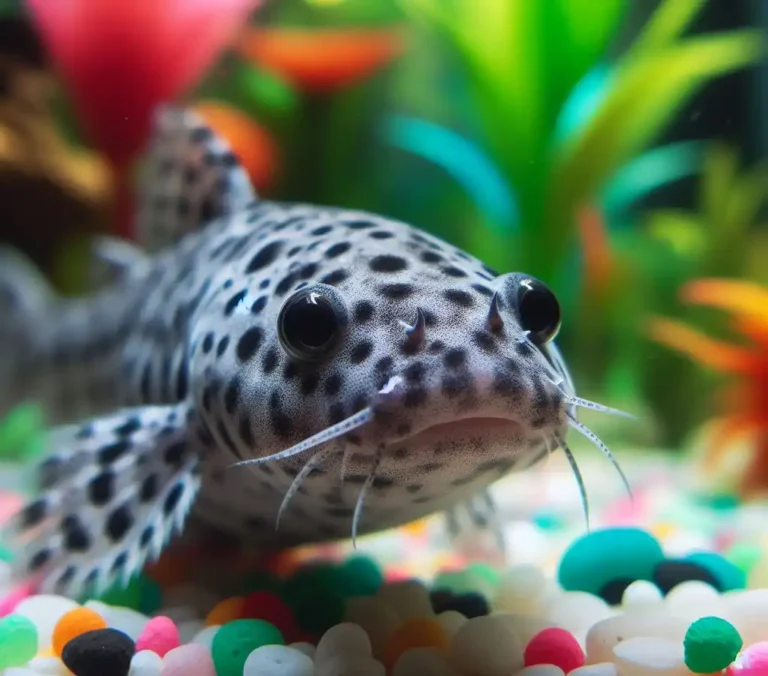Betta Fish Marbling: Understanding the Process and Techniques
Betta Fish Marbling: In the vibrant world of betta fish, one trait stands out for its mesmerizing beauty and intricate complexity: marbling.
But what lies behind the mystique of marbling? How do genetics, environment, and nutrition intersect to create this stunning visual effect?
In this comprehensive guide, we’ll delve into the world of betta fish marbling, exploring its genetics, breeding strategies, and care requirements.
Betta Fish Marbling: A Quick Guide
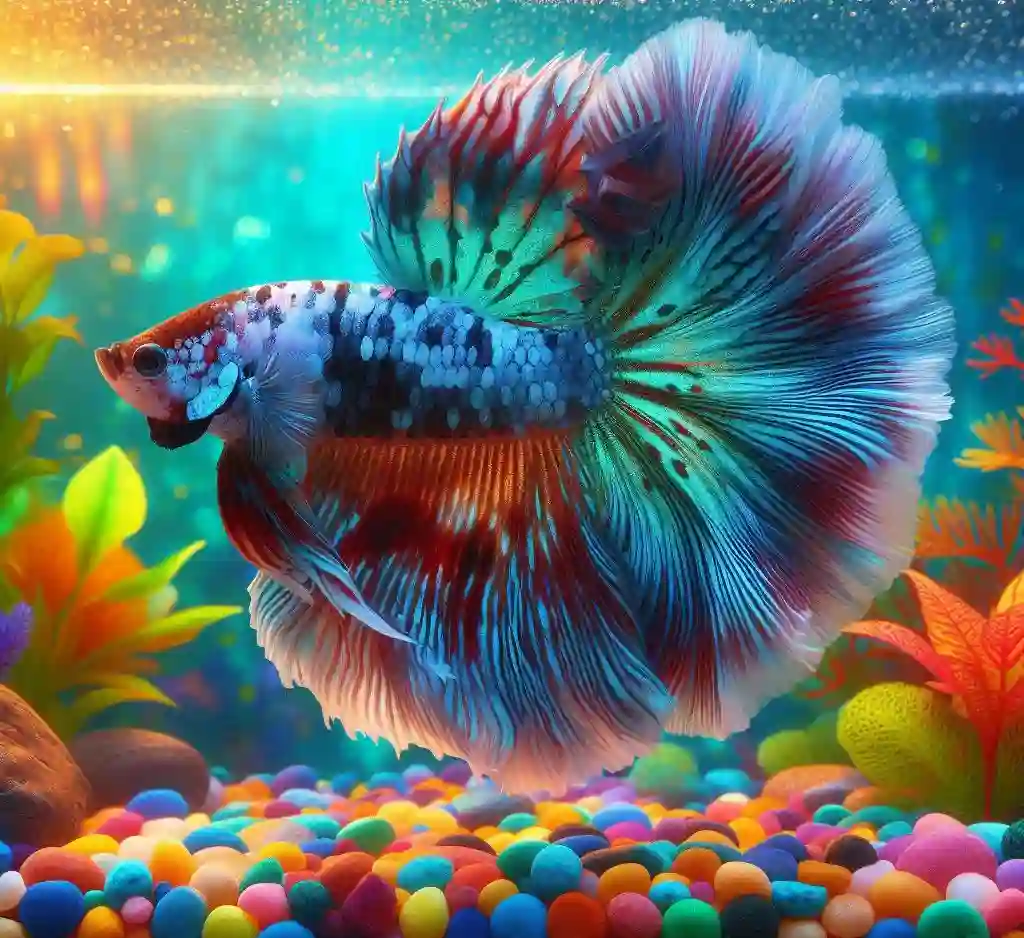
Types of Marbling
- Dragon Scale Marbling: Large, irregular scales that resemble dragon skin.
- Galaxy Marbling: Swirling, cosmic patterns with shades of blue, purple, and silver.
- Tiger Marbling: Bold, striped patterns with darker stripes on a lighter background.
Genetics of Marbling
- Multiple genes control marbling patterns.
- Epistasis, polygenic inheritance, and dominance affect marbling expression.
Breeding for Marbling
- Select for desirable marbling patterns.
- Linebreed to concentrate desirable traits.
- Outbreed to introduce new genes and increase genetic diversity.
Preserving and Enhancing Marbling
- Provide optimal water quality, temperature, and lighting.
- Feed a balanced diet rich in omega-3 fatty acids and antioxidants.
- Monitor health and reduce stress to promote marbling expression.
Common Mistakes
- Inadequate water changes can lead to poor water quality and affect marbling.
- Poor nutrition can lead to nutritional deficiencies and affect marbling.
- Stress and overcrowding can affect marbling expression.
Getting Started
- Research and understand the genetics of marbling.
- Select high-quality breeding stock with desirable marbling patterns.
- Provide optimal care and attention to enhance marbling expression.
What is Marbling in Betta Fish?
Marbling in betta fish refers to a unique, intricate pattern of colors that resemble a marbled appearance on the fish’s scales. This phenomenon is caused by the interaction of multiple genes that control the production and distribution of pigments in the fish’s skin.
Marbling can manifest in various ways, including:
- Swirling patterns: Whirling, spiral, or circular patterns that resemble a mix of colors.
- Mottling: Small, rounded patches of color that blend into each other.
- Veiling: A subtle, misty appearance that gives the fish a soft, hazy look.
Marbling can occur in various colors, including red, blue, green, yellow, and white. The patterns can be subtle or dramatic, and they can change depending on the fish’s mood, environment, and lighting conditions.
Marbling is a highly prized trait in betta fish breeding, as it adds an extra layer of beauty and uniqueness to the fish’s appearance. Breeders and enthusiasts often strive to create new and exciting marbling patterns through selective breeding and genetic manipulation.
Types of Marbling Patterns
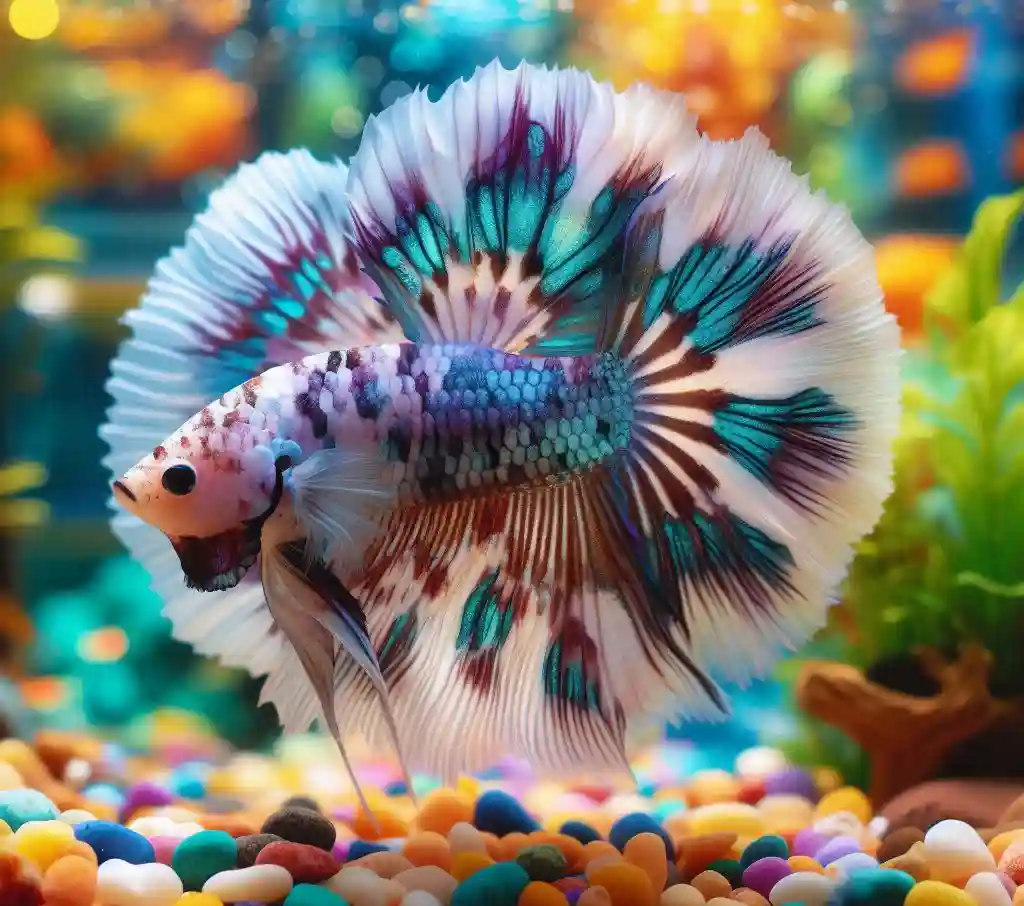
- Dragon Scale Marbling: Characterized by large, irregular scales that resemble dragon skin. This pattern is often seen in high-quality show bettas.
- Galaxy Marbling: Features a swirling, cosmic pattern with shades of blue, purple, and silver. This pattern gives the fish a mesmerizing, otherworldly appearance.
- Tiger Marbling: Displays a bold, striped pattern with darker stripes on a lighter background, reminiscent of a tiger’s fur.
- Peacock Marbling: Exhibits a stunning, iridescent sheen with shades of blue, green, and gold, similar to a peacock’s feathers.
- Mosaic Marbling: Features small, irregular patches of color that resemble a mosaic artwork. This pattern can create a beautiful, abstract design.
- Veiled Marbling: Characterized by a subtle, misty appearance with soft, blended colors. This pattern gives the fish a delicate, ethereal look.
- Candy Marbling: Displays a colorful, swirly pattern with pastel shades, reminiscent of candy or cotton candy.
- Oil Slick Marbling: Features a shimmering, rainbow-colored pattern that resembles the sheen on an oil slick.
- Waterfall Marbling: Exhibits a flowing, wavy pattern with shades of blue and green, reminiscent of a waterfall.
- Chameleon Marbling: Displays a unique, color-shifting pattern that changes depending on the lighting and viewing angle.
Genetics of Marbling
Key Genes Involved in Marbling:
- Melanin genes: Control the production of melanin, the pigment responsible for black and dark brown colors.
- Iridescence genes: Influence the production of iridescent colors, such as blue, green, and gold.
- Xanthophore genes: Regulate the production of yellow and orange pigments.
- Pattern genes: Control the distribution and arrangement of pigments to create specific patterns.
Genetic Interactions:
- Epistasis: The interaction between multiple genes that affects the expression of marbling patterns.
- Polygenic inheritance: The combined effect of multiple genes that influence marbling patterns.
- Dominance and recessiveness: The relationship between dominant and recessive alleles that affect the expression of marbling patterns.
Genetic Factors Affecting Marbling:
- Genotype: The genetic makeup of an individual fish, which determines its potential for marbling.
- Phenotype: The physical expression of marbling patterns, influenced by the interaction of genes and environmental factors.
- Epigenetics: Environmental factors, such as diet, temperature, and light, that can affect the expression of marbling patterns.
Breeding Strategies:
- Linebreeding: Breeding closely related individuals to concentrate desirable genes and enhance marbling patterns.
- Outbreeding: Breeding unrelated individuals to introduce new genes and increase genetic diversity.
- Selection: Choosing individuals with desirable marbling patterns to breed and perpetuate those traits.
How to Identify Marbling in Betta Fish
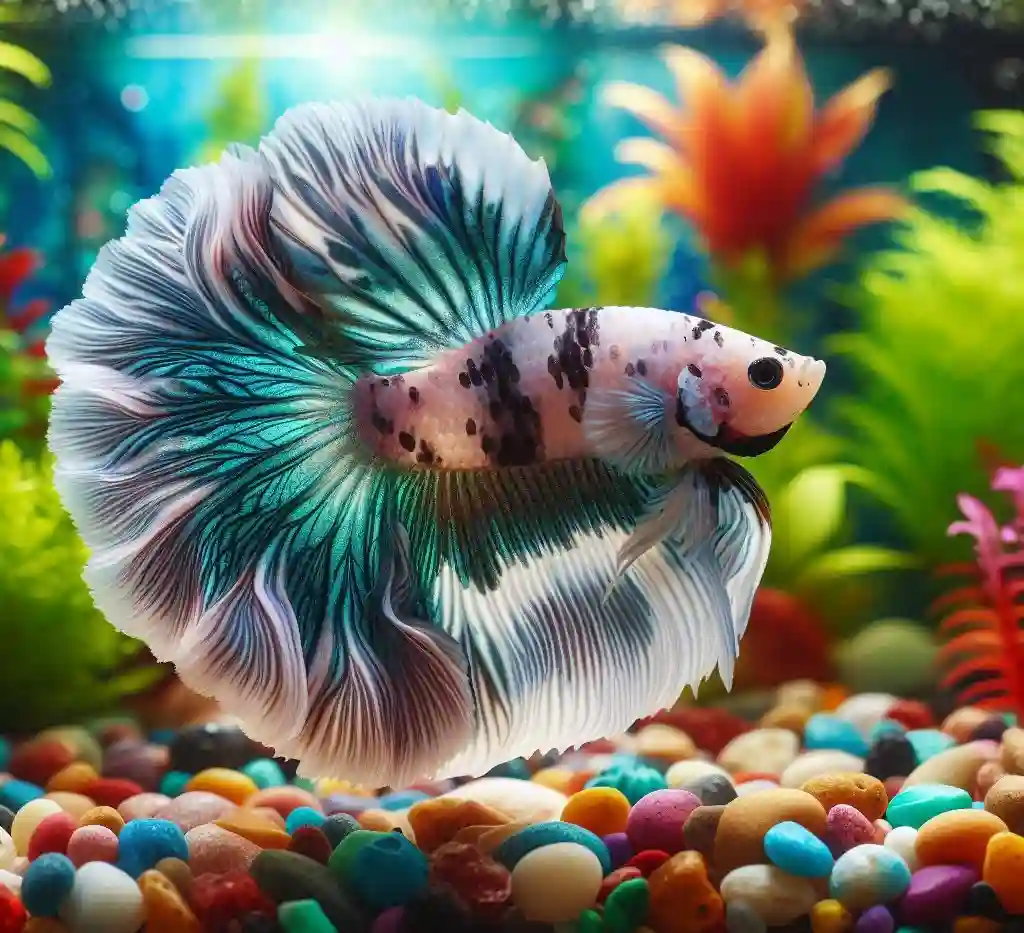
Visual Inspection:
- Observe the fish from different angles: Marbling patterns can appear differently depending on the viewing angle.
- Look for subtle color changes: Marbling patterns often involve subtle changes in color, so observe the fish carefully.
- Check for pattern repetition: Marbling patterns often repeat themselves, so look for repeating patterns on the fish’s body.
Characteristics of Marbling:
- Swirling patterns: Marbling patterns often feature swirling, whirling, or spiral patterns.
- Color blending: Marbling patterns often involve blending of colors, creating a gradual transition between shades.
- Iridescence: Marbling patterns can exhibit iridescence, which appears as a shimmering or rainbow-colored effect.
- Mottling: Marbling patterns can feature small, rounded patches of color, known as mottling.
Tips for Identifying Marbling:
- Use good lighting: Good lighting can help bring out the marbling pattern.
- Observe the fish in different environments: Marbling patterns can appear differently in different environments, such as in a tank with different decorations or lighting.
- Compare with other fish: Comparing the fish with others can help you identify unique marbling patterns.
- Look for consistency: Marbling patterns should be consistent across the fish’s body, although the pattern may vary in intensity or color.
Common Mistakes:
- Confusing marbling with other patterns: Marbling can be mistaken for other patterns, such as veiltail or halfmoon patterns.
- Overlooking subtle patterns: Marbling patterns can be subtle, so it’s essential to observe the fish carefully.
- Misidentifying marbling as a defect: Marbling can be mistaken for a defect or a sign of poor health.
Breeding for Marbling
Understanding Marbling Genetics:
- Know the genetics of marbling: Understand the genes involved in marbling, including melanin, iridescence, and xanthophore genes.
- Identify the genetic factors: Identify the genetic factors that influence marbling, such as epistasis, polygenic inheritance, and dominance.
Selecting Breeding Stock:
- Choose fish with desirable marbling: Select fish with the desired marbling pattern, color, and intensity.
- Look for consistency: Choose fish with consistent marbling patterns across their body.
- Select for genetic diversity: Select fish with diverse genetic backgrounds to increase the chances of producing unique marbling patterns.
Breeding Strategies:
- Linebreeding: Breed closely related individuals to concentrate desirable genes and enhance marbling patterns.
- Outbreeding: Breed unrelated individuals to introduce new genes and increase genetic diversity.
- Selection breeding: Selectively breed fish with desirable marbling patterns to perpetuate those traits.
Breeding Techniques:
- Pair breeding: Breed a single male and female to produce offspring with a specific marbling pattern.
- Group breeding: Breed multiple males and females together to increase genetic diversity and the chances of producing unique marbling patterns.
- Artificial insemination: Use artificial insemination to breed fish with specific marbling patterns.
Tips for Successful Breeding:
- Keep accurate records: Keep detailed records of breeding, including parentage, genetics, and marbling patterns.
- Monitor water quality: Maintain optimal water quality to ensure healthy fish and successful breeding.
- Provide optimal care: Provide optimal care, including nutrition, temperature, and lighting, to ensure healthy fish and successful breeding.
Common Challenges:
- Genetic variability: Marbling patterns can be influenced by multiple genes, making it challenging to predict outcomes.
- Unpredictable inheritance: Marbling patterns can be inherited unpredictably, making it challenging to breed for specific patterns.
- Inbreeding depression: Inbreeding can lead to inbreeding depression, which can negatively impact marbling patterns.
Marbling and Color
Color and Marbling Patterns:
- Iridescence: Iridescent colors, such as blue, green, and gold, can create a shimmering effect that enhances the marbling pattern.
- Metallic colors: Metallic colors, like copper, bronze, and silver, can add depth and dimension to the marbling pattern.
- Pastel colors: Pastel colors, such as pink, yellow, and orange, can create a soft, delicate marbling pattern.
- Dark colors: Dark colors, like black, brown, and red, can create a dramatic, high-contrast marbling pattern.
How Color Affects Marbling:
- Color intensity: The intensity of the color can affect the visibility of the marbling pattern. Brighter colors can make the marbling pattern more pronounced.
- Color distribution: The distribution of color on the fish’s body can influence the marbling pattern. For example, a fish with a predominantly blue body may have a more subtle marbling pattern.
- Color contrast: The contrast between different colors can create a striking marbling pattern. For example, a fish with a black body and white fins may have a dramatic marbling pattern.
Breeding for Color and Marbling:
- Select for color: Breed fish with desirable colors to enhance the marbling pattern.
- Select for marbling pattern: Breed fish with desirable marbling patterns to enhance the color.
- Linebreeding: Linebreed fish with desirable colors and marbling patterns to concentrate those traits.
- Outbreeding: Outbreed fish with different colors and marbling patterns to introduce new traits and increase genetic diversity.
Challenges in Breeding for Color and Marbling:
- Genetic complexity: The genetics of color and marbling are complex, making it challenging to predict outcomes.
- Inconsistent inheritance: Color and marbling patterns can be inherited inconsistently, making it challenging to breed for specific traits.
- Environmental influences: Environmental factors, such as lighting and water quality, can affect the appearance of color and marbling patterns.
Marbling and Finnage
Finnage and Marbling Patterns:
- Finnage types: There are several types of finnage in betta fish, including veiltail, halfmoon, and crown tail. Each type can interact with marbling patterns in unique ways.
- Marbling on fins: Marbling patterns can appear on the fins, adding an extra layer of complexity and beauty to the fish’s appearance.
- Finnage shape and marbling: The shape and size of the fins can affect the appearance of marbling patterns. For example, a veiltail fin may create a more dramatic marbling pattern than a halfmoon fin.
How Finnage Affects Marbling:
- Finnage size and shape: The size and shape of the fins can influence the visibility and appearance of marbling patterns.
- Finnage movement: The movement of the fins can create a dynamic, shimmering effect that enhances the marbling pattern.
- Finnage color: The color of the fins can interact with the marbling pattern, creating a striking contrast or harmony.
Breeding for Marbling and Finnage:
- Select for finnage type: Breed fish with desirable finnage types, such as veiltail or halfmoon, to enhance the marbling pattern.
- Select for marbling pattern: Breed fish with desirable marbling patterns to enhance the finnage.
- Linebreeding: Linebreed fish with desirable finnage and marbling patterns to concentrate those traits.
- Outbreeding: Outbreed fish with different finnage and marbling patterns to introduce new traits and increase genetic diversity.
Challenges in Breeding for Marbling and Finnage:
- Genetic complexity: The genetics of marbling and finnage are complex, making it challenging to predict outcomes.
- Inconsistent inheritance: Marbling and finnage patterns can be inherited inconsistently, making it challenging to breed for specific traits.
- Environmental influences: Environmental factors, such as water quality and nutrition, can affect the appearance of marbling and finnage patterns.
Preserving and Enhancing Marbling
Environmental Factors:
- Water quality: Maintain optimal water quality by performing regular water changes and monitoring water parameters.
- Temperature: Keep the water temperature between 76°F to 82°F (24°C to 28°C), which is ideal for betta fish.
- Lighting: Provide moderate lighting, as excessive lighting can stress the fish and affect marbling.
- Water movement: Maintain gentle water movement to prevent stress and promote healthy swimming.
Nutrition:
- High-quality food: Feed your betta fish high-quality commercial pellets or flakes that are rich in protein and omega-3 fatty acids.
- Variety of foods: Offer a variety of foods, such as live or frozen brine shrimp, bloodworms, and vegetables, to ensure a balanced diet.
- Avoid overfeeding: Avoid overfeeding, as it can lead to digestive issues and affect marbling.
Health and Wellness:
- Monitor health: Regularly monitor your betta fish’s health, looking for signs of stress, disease, or injury.
- Provide hiding places: Provide plenty of hiding places, such as plants or decorations, to reduce stress and promote relaxation.
- Avoid overcrowding: Keep your betta fish alone or with peaceful tankmates to prevent stress and aggression.
Enhancing Marbling:
- Genetic selection: Select betta fish with desirable marbling patterns and breed them to enhance the trait.
- Environmental enrichment: Provide environmental enrichment, such as toys or puzzles, to stimulate your betta fish’s mental and physical health.
- Nutritional supplements: Consider adding nutritional supplements, such as omega-3 fatty acids or antioxidants, to your betta fish’s diet to enhance marbling.
Common Mistakes:
- Inadequate water changes: Failing to perform regular water changes can lead to poor water quality and affect marbling.
- Poor nutrition: Feeding your betta fish a poor-quality diet can lead to nutritional deficiencies and affect marbling.
- Stress and overcrowding: Failing to provide a stress-free environment can lead to stress, which can affect marbling.
FAQs
Q: What is marbling in betta fish?
A: Marbling in betta fish refers to a unique, intricate pattern of colors that resembles a marbled appearance on the fish’s scales.
Q: How is marbling inherited in betta fish?
A: Marbling is a complex trait that is influenced by multiple genes. It can be inherited through breeding and selection.
Q: Can marbling be enhanced through breeding?
A: Yes, marbling can be enhanced through selective breeding and genetic selection.
Q: How does nutrition affect marbling in betta fish?
A: A balanced diet rich in omega-3 fatty acids and antioxidants can help enhance marbling in betta fish.
Q: Can marbling be affected by environmental factors?
A: Yes, environmental factors such as water quality, temperature, and lighting can affect the appearance of marbling in betta fish.
Q: How can I preserve and enhance marbling in my betta fish?
A: By providing optimal water quality, a balanced diet, and a stress-free environment, you can help preserve and enhance marbling in your betta fish.
Q: Can marbling be affected by disease or stress?
A: Yes, disease or stress can affect the appearance of marbling in betta fish. It’s essential to monitor your fish’s health and provide a stress-free environment.
Q: Can I breed betta fish with marbling patterns?
A: Yes, you can breed betta fish with marbling patterns. However, it requires careful selection and breeding to enhance the trait.
Q: How long does it take to develop marbling in betta fish?
A: Marbling can develop over time through selective breeding and genetic selection. The timeframe can vary depending on the breeding program and the desired outcome.

Hello, I’m Aria Cooper, the heart and soul behind Swimmy Buddies. As a devoted fish aficionado, I share my aquatic adventures and expertise to inspire your own underwater explorations. 🐠🌊

